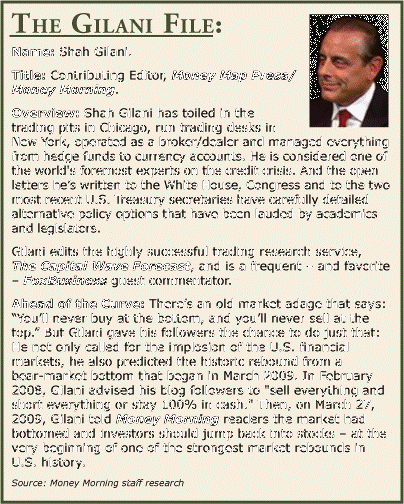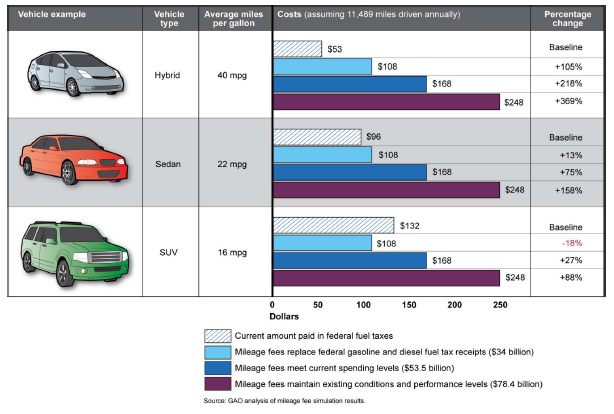How to Use Utilities Stocks to Pump Up Your Portfolio Money Morning We Make Investing Profitable
Post on: 8 Июнь, 2015 No Comment

display>
There was a time when the words widows and orphans pretty much defined utilities stocks. As well-regulated monopolies whose products were in constant and increasing demand, they provided a steady stream of income with a level of safety adequate for even the most conservative portfolios.
Because of more competition, looser rate regulation, and slower growth, utility stocks aren’t quite the safe haven they once were. But with interest rates at all-time lows and continuing economic turmoil, they still have something to offer most investors.
Of course, the public utilities field today is considerably less broad and diverse than when your grandmother went looking for her retirement stocks.
Following the dismantling of Ma Bell (the original AT&T), which began in 1974, regulated phone utilities gradually disappeared in all but a few rural areas, leading to today’s highly competitive tangle of publicly traded telephone companies.
Similarly, most of the smaller public water companies have been snapped up by a few big players like American Water Works Co. Inc. (NYSE: AWK ) who run them as state-regulated subsidiaries.
That makes energy companies the most viable options for utilities stocks. And recent numbers indicate a turnaround is brewing in that sector.
Shifting Currents
Like many other U.S. industries, energy companies were hurt by the economic collapse and ensuing recession. The bust in the housing market was particularly damaging, as embattled homeowners reduced consumption, slicing into operating margins, and the halt in new housing development stifled growth and suppressed revenues.
Most of the leading utilities reported flat or lower revenues and profits in 2009, and things didn’t get much better in the first quarter of 2010. The utility stocks in the Standard & Poor’s 500 Index posted more negative earnings surprises in that quarter than did companies in any other industry group. The sector reported earnings growth of just 7.5%, compared to 51% for the overall market. Utilities were one of only two market sectors that failed to meet year-over-year revenue projections, managing a gain of just under 1%.
In the second quarter, however, most of the major public utilities showed a marked improvement, with many top companies beating expectations when they reported earnings in August. ITC Holdings Corp. (NYSE: ITC ) had per-share income of 71 cents versus estimates of 66 cents. And Dominion Resources Inc. (NYSE: D ) reported an operating profit of 72 cents a share, up 4 cents from a year earlier and 6 cents better than projections.
The broad-based improvement in the sector was reflected by the iShares Dow Jones U.S. Utilities ETF (NYSE: IDU ), which outperformed all other major-sector ETFs in the second quarter a complete reversal from the first three months of the year, when it was the only iShares major-sector fund to finish in the red.
Some of those gains were, of course, due to the hotter-than-usual summer, but rising industrial demand also accounted for a major portion of increased usage. That’s likely to continue, or at least hold steady, as the economy works its way out of the lingering recession. Several companies supported that contention by raising earnings projections for the full year, led by Dominion, which upped its lower-end estimate to $3.25 from $3.20.
Even if the pace of recovery remains slow, there’s a bottom under current demand levels, because people have to have heat and lights especially during the winter.
That certainty of demand with only minor fluctuations like we saw in 2008 and 2009 is one of the major benefits of investing in utilities. Certainty of growth due to an increasing population is another. Both of those factors tend to ensure the safety of a utility investment since its captive consumer base virtually guarantees a utility company won’t fail. And while the government has relaxed laws to promote more competition, the high infrastructure costs limit the likelihood that a newcomer will make serious inroads in the markets of existing companies.
From an investment standpoint, utility companies are attractive because they generate a high level of cash flow, have stocks that trade at relatively low price-to-earnings multiples, aren’t overly volatile and, most importantly, pay rich dividends. The low volatility is illustrated by the fact that the utility industry’s beta is a mere 0.17 (versus 1.00 for the overall market). And the high dividends give the utility sector an average yield of 2.90% compared to just 1.63% for the S&P 500 as a whole.
There’s also plenty of room for capital growth. For the five years ending with the second quarter of 2010, the Standard & Poor’s Utilities Sector Index returned 24.4%.
Finally, for the environmentally conscious, utility companies are among the leaders in researching and developing green energy. They recognize that such efforts are essential to guaranteeing future supplies, meeting government clean-air and renewable-power standards and sustaining their leadership positions in the industry.

Electrifying Your Portfolio
If those sound like traits you’d like to embrace with your investments, here’s a handful of major utility stocks you may want to consider (in no particular order). All are capable of charging up the yield from your portfolio, as well as providing ample growth potential as the economy regains its footing:
- American Electric Power Company Inc. (NYSE: AEP ), recent price: $35.35 With operations across 11 states in the South and Midwest, AEP has a diverse market and has shown skill at getting rate relief from regulators, keeping profit margins high. The company reported ongoing earnings for the second quarter of $355 million, or 74 cents per share, up from $321 million or 68 cents per share in the same period in 2009. With a market capitalization of $16.97 billion, the P/E is 14.6 and the dividend of $1.68 a share equates to a yield of 4.75%.
- CenterPoint Energy Inc. (NYSE: CNP ), recent price: $15.21 CNP gets the bulk of its business from Texas, which has been less impacted by the recession and housing collapse than other areas, and has thus shown stronger growth than many other electric utilities. The stock has a market cap of $6.25 billion and a price/earnings (P/E) ratio of 14.3, based on trailing-12-month earnings of $1.05 a share. The dividend of 78 cents equates to a yield of 5.13%.
- Dominion Resources Inc. (NYSE: D ), recent price: $43.78 Dominion is one of the country’s largest electrical generators and operates the country’s largest natural gas storage system, with a capacity of 942 billion cubic feet. Operating in the Midwest, Mid-Atlantic and Northeast, the company has a market cap of $25.77 billion, a P/E of 9.7 and earnings of $4.22 a share over the past year. The $1.83 dividend provides a yield of 4.18%.
- PG&E Corp. (NYSE: PCG ), recent price: $47.69 PG&E operates primarily in Northern California and is trading at a discount to historic values based on the state’s housing problems and rate pressures, both of which should ease in the coming year, allowing for above-market growth. The current capitalization is $18.63 billion, the P/E stands at 15.9, earnings were $3.08 a share over the past year and the dividend of $1.82 equates to a yield of 3.82%.
- TECO Energy Inc. (NYSE: TE ), recent price: $17.42 A smaller utility company, TECO could be poised for a rebound since it operates primarily in Florida, which was particularly hard hit by the housing crunch. One advantage it has is that it owns or operates coalmines in Kentucky, Tennessee and Virginia, assuring price consistency in the fuel it needs for its generating plants. The market cap is $3.74 billion, the P/E is 14.98 and trailing-year earnings were $1.16 a share. The 82-cent dividend provides a yield of 4.71%.
- Xcel Energy Inc. (NYSE: XEL ), recent price: $22.66 A good environmental choice since Xcel is the nation’s No. 1 wind-power provider, thanks to huge wind farms scattered across West Texas and southern Kansas. It’s also the fifth-largest utility in watt hours of solar generation. Current market cap is $10.42 billion, earnings are $1.51 a share, translating to a P/E of 15.04, and the $1.01 dividend throws off a yield of 4.46%.
Another company you might consider if you’re not put off by nuclear power is Exelon Corp. (NYSE: EXC ), recent price: $42.04, which is the largest owner/operator of nuclear plants in the United States. Based in Chicago and serving customers across the upper Ohio Valley, it gains a strong price advantage when oil, gas and coal costs are rising. The P/E ratio is 11 based on earnings of $3.82 a share. The dividend is $2.10, providing a yield of 5%.
If you prefer to pull your utility profits from funds rather than individual stocks, here are three ETFs you can consider:
- iShares Dow Jones US Utilities Fund (NYSE: IDU ), recent price: $76.30 Tracks the Dow Jones U.S. Utilities Index, which includes companies in the electricity, gas, water and multi-utility industries, though it doesn’t always hold all the securities included in the index, nor are the proportions exact. The expense ratio is a below-average 0.48%, the P/E is 12 and the yield is a little more than 3.5%.
- SPDR S&P International Utilities Fund (NYSE: IPU ), recent price: $20.60 This fund provides both utility exposure and international diversification since it tracks the utilities sector of developed global markets outside the U.S. Among the smaller funds with $11.1 million in assets, the fund is currently trading at a small discount to net asset value. Yield was 3.53% on July 31 and the expense ratio is 0.50%.
- Utilities Select Sector SPDR (NYSE: XLU ), recent price: $31.57 This non-diversified fund tracks the Utilities Select Sector Index of electric and gas utilities, independent power producers and energy trading firms, investing 95% of its funds in companies making up the index. The expense ratio is just 0.22% versus the industry average of 0.54%. Recent yield was 4.14% and the P/E ratio is 12.
Despite their advantages, utility stocks and ETFs are not without their risks. Both will fall in major market downturns though probably less than the major indexes and both can be impacted by company-specific risks. You should devise an exit strategy whenever you take a new position and enforce it through the use of stop orders.
News and Related Story Links:
- Wikipedia:














